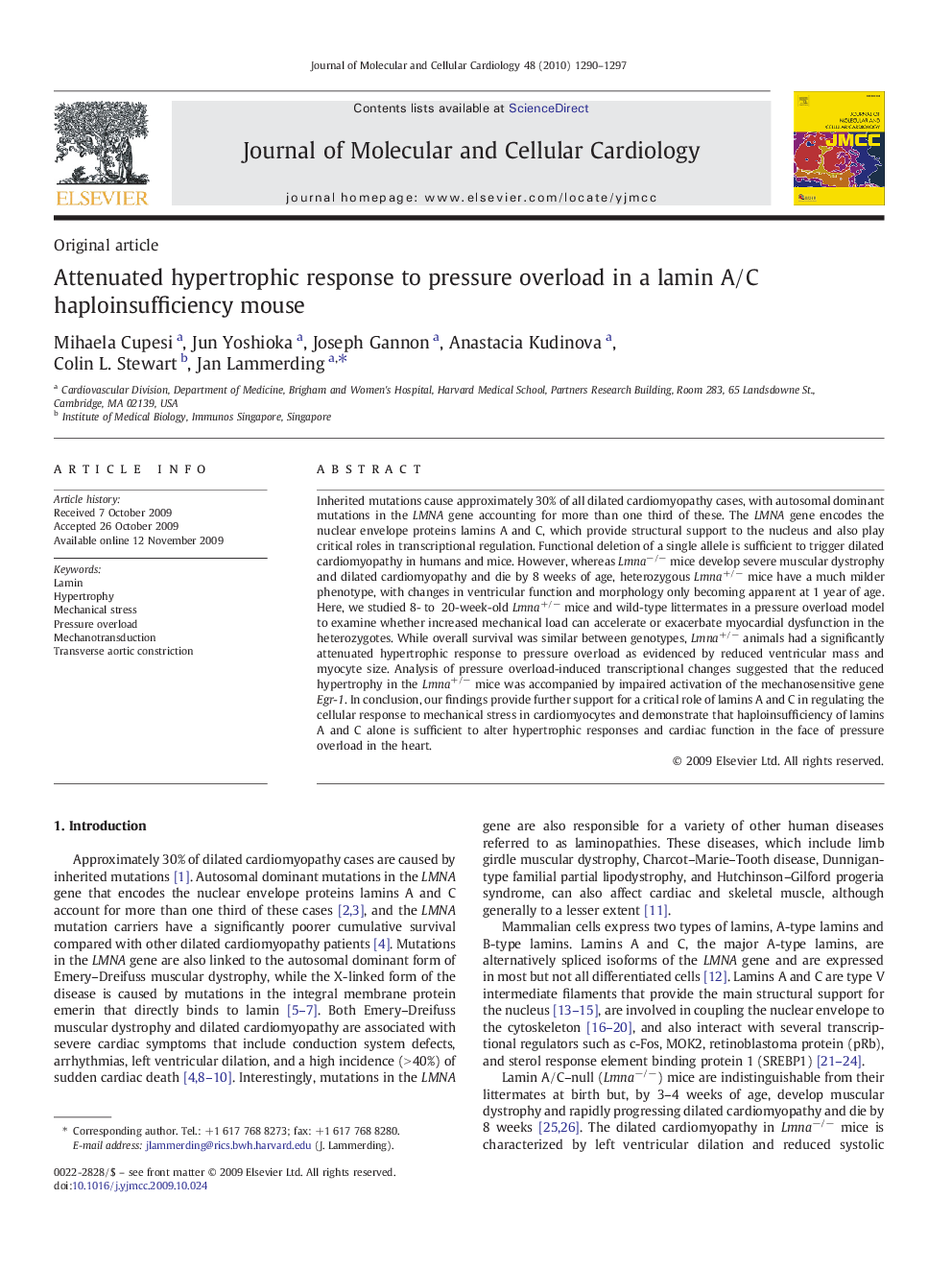| Article ID | Journal | Published Year | Pages | File Type |
|---|---|---|---|---|
| 10954198 | Journal of Molecular and Cellular Cardiology | 2010 | 8 Pages |
Abstract
Inherited mutations cause approximately 30% of all dilated cardiomyopathy cases, with autosomal dominant mutations in the LMNA gene accounting for more than one third of these. The LMNA gene encodes the nuclear envelope proteins lamins A and C, which provide structural support to the nucleus and also play critical roles in transcriptional regulation. Functional deletion of a single allele is sufficient to trigger dilated cardiomyopathy in humans and mice. However, whereas Lmnaâ/â mice develop severe muscular dystrophy and dilated cardiomyopathy and die by 8 weeks of age, heterozygous Lmna+/â mice have a much milder phenotype, with changes in ventricular function and morphology only becoming apparent at 1 year of age. Here, we studied 8- to  20-week-old Lmna+/â mice and wild-type littermates in a pressure overload model to examine whether increased mechanical load can accelerate or exacerbate myocardial dysfunction in the heterozygotes. While overall survival was similar between genotypes, Lmna+/â animals had a significantly attenuated hypertrophic response to pressure overload as evidenced by reduced ventricular mass and myocyte size. Analysis of pressure overload-induced transcriptional changes suggested that the reduced hypertrophy in the Lmna+/â mice was accompanied by impaired activation of the mechanosensitive gene Egr-1. In conclusion, our findings provide further support for a critical role of lamins A and C in regulating the cellular response to mechanical stress in cardiomyocytes and demonstrate that haploinsufficiency of lamins A and C alone is sufficient to alter hypertrophic responses and cardiac function in the face of pressure overload in the heart.
Keywords
Related Topics
Life Sciences
Biochemistry, Genetics and Molecular Biology
Cell Biology
Authors
Mihaela Cupesi, Jun Yoshioka, Joseph Gannon, Anastacia Kudinova, Colin L. Stewart, Jan Lammerding,
